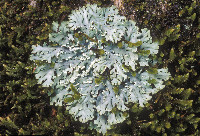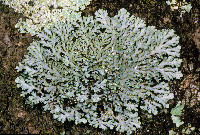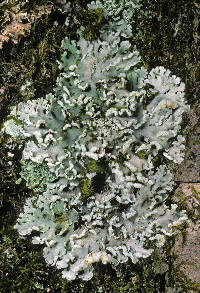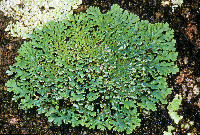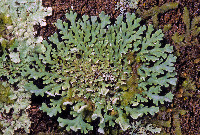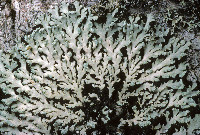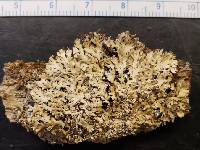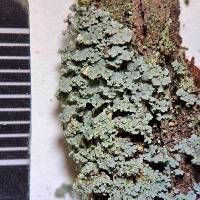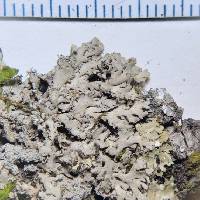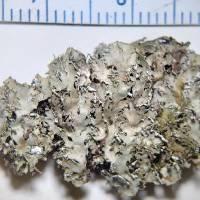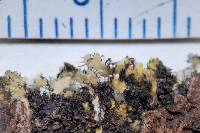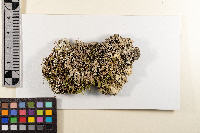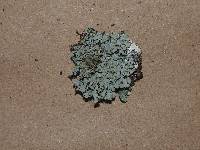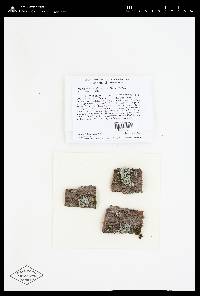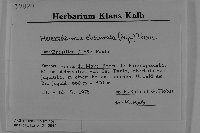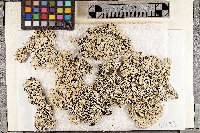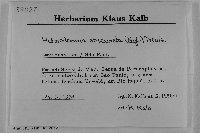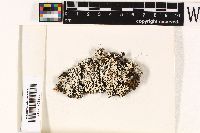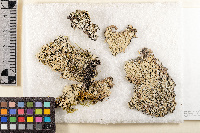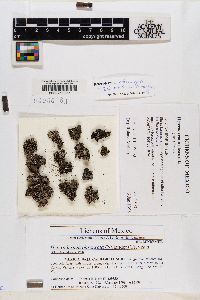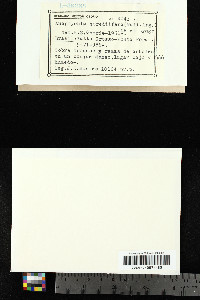
Consortium of Lichen Herbaria
- building a Global Consortium of Bryophytes and Lichens as keystones of cryptobiotic communities -
- Home
- Search
- Images
- Species Checklists
- US States: O-Z >
- US National Parks
- Central America
- South America
- US National Parks
- Southern Subpolar Region
|
|
|
|
Family: Physciaceae
Orange-bellied Fringe Lichen
[Anaptychia heterochroa Vain., moreAnaptychia hypoleuca var. colorata Zahlbr., Anaptychia obscurata (Nyl.) Vain., Anaptychia obscurata var. obscurata (Nyl.) Vain., Anaptychia obscurata var. serpens Vain., Anaptychia sorediifera (Müll. Arg.) Du Rietz & Lynge, Anaptychia sorediifera var. colorata (Zahlbr.) Nádv., Anaptychia sorediifera var. sorediifera (Müll. Arg.) Du Rietz & Lynge, Heppia obscuratula Nyl., Peltula obscuratula (Nyl.) Poelt ex Egea, Physcia obscurata Nyl.] |
Nash, T.H., Ryan, B.D., Gries, C., Bungartz, F., (eds.) 2002. Lichen Flora of the Greater Sonoran Desert Region. Vol 1. Thallus: foliose, forming ± orbicular rosettes or irregularly spreading, robust, 2-4 (-10) cm diam., ± firmly adnate, dichotomously to irregularly lobate lobes: c. 1-2 mm, radiating, sparsely divided, ± discrete, flat to slightly convex, minutely notched, eciliate upper surface: gray-white to rarely dark gray in center, shiny, not or rarely pruinose, sorediate soredia: granular, often rusty brown, in labriform to capitate soralia on lateral and terminal lobes, sometimes confluent and forming marginal soralia upper cortex: prosoplectenchymatous medulla: white above, rusty brown below lower cortex: absent lower surface: felted with rust-colored or yellowish-brown pigment, K+ purple, not to be confused with the bluish-black underside present in H. japonica, arachnoid, rhizinate; rhizines: black, marginal, simple to squarrosely branched Apothecia: rare (not seen in Sonoran material), substipitate, 1-5 mm in diam., margin becoming sorediate; disc: blackish brown, epruinose asci: cylindrical to subclavate, 8-spored ascospores: brown, l-septate, ellipsoid, 29-35 x 15-19 Pycnidia: not seen Spot tests: cortex K+ yellow C-, KC-, P+ yellow; medulla K-, C-, KC-, P- Secondary metabolites: cortex with atranorin and chloroatranorin; medulla with atranorin, zeorin, an unidentified terpene and a rusty brown pigment. Substrate and ecology: growing on trunks of deciduous trees and mossy rocks in open but humid conditions World distribution: common and widespread in tropical and subtropical areas, extending to warm temperate region in Europe and SE North America Sonoran distribution: the mountains of SE Arizona, the Sierra Madre Occidental region of Chihuahua and mountains in the southern tip of Baja California Sur. Notes: It is characterized by its robust appearance, the distinct labiate soredia and the rusty-brown pigmented (K+ purple) lower surface. Similar species include H. japonica, which differs in having a K+ yellow-red medullary reaction and is not pigmented or with only sparse rusty brown pigment (K) on its lower surface. Another similar species, H. speciosa, is distinguished by having a lower cortex and lacks any rusty brown pigmentation. Heterodermia obscurata is regarded as the sorediate counterpart of H. flabellata. |
|
|
|
Powered by Symbiota



